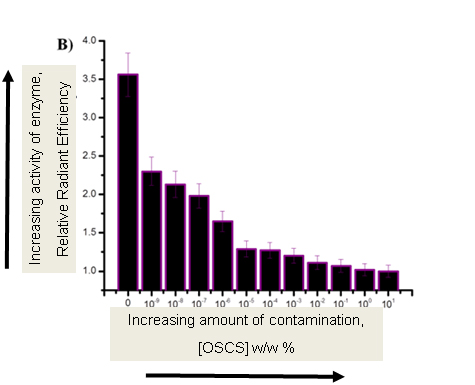Biomedical, Engineering and physical science
High Sensitivity Detection of Contaminates in Heparin
The technology
Market need
Heparin is known for its uses as an anticoagulant. Since heparin is a naturally occurring polysaccharide, it needs to be purified for human use. Heparin lots could be contaminated by a related molecule called oversulfated chondroitin sulfate (OSCS). OSCS is unsafe for human use and results in a variety of reactions including severe anaphylaxis, drop in blood pressure, and possible death. The FDA requires all heparin lots be tested for purity before they are manufactured into medications. Several methods exist for detection of OSCS; however, they are not always very accurate or sensitive. Some detection methods are capable of sensing very small levels of contamination but they cannot detect larger levels of the impurity, requiring multiple methods be used which is costly and fraught with a high margin of error.
Technology summary
This method is able to detect an amount as low as 10-9 % w/w OSCS in heparin, about 6 orders of magnitude more sensitive than current tests. This test can be performed rapidly with some levels of contamination apparent in a matter of minutes and full sensitivity after a half hour. The test consists of a gold nanoparticle sensor covered with heparin and a dye. The contaminant is an inhibitor of the enzyme heparitinase. When the heparin lot in question is pure, the enzyme will cause the nanosensor to fluoresce. When the lot is contaminated, the enzyme will not disrupt the sensor’s heparin coating and will not activate the dye. The figure shows the relative radiant efficiencies to the amount of contamination.

Technology status
In vivo imaging system validation of the sensitivity of the fluorescent detection to 10-9 % w/w OSCS impurity.
